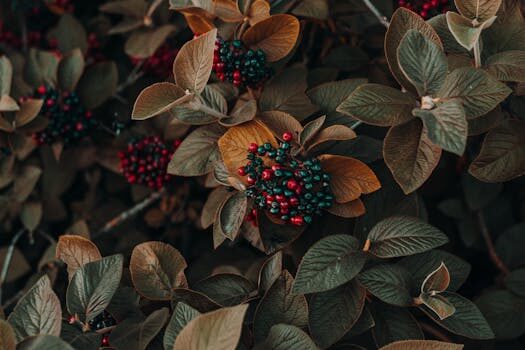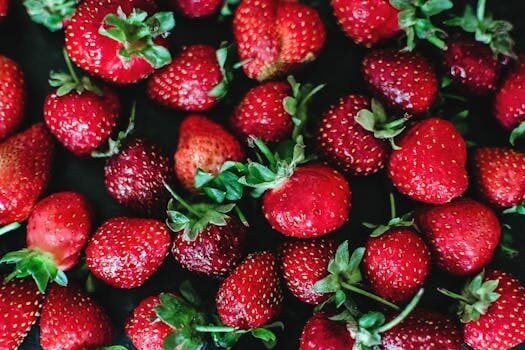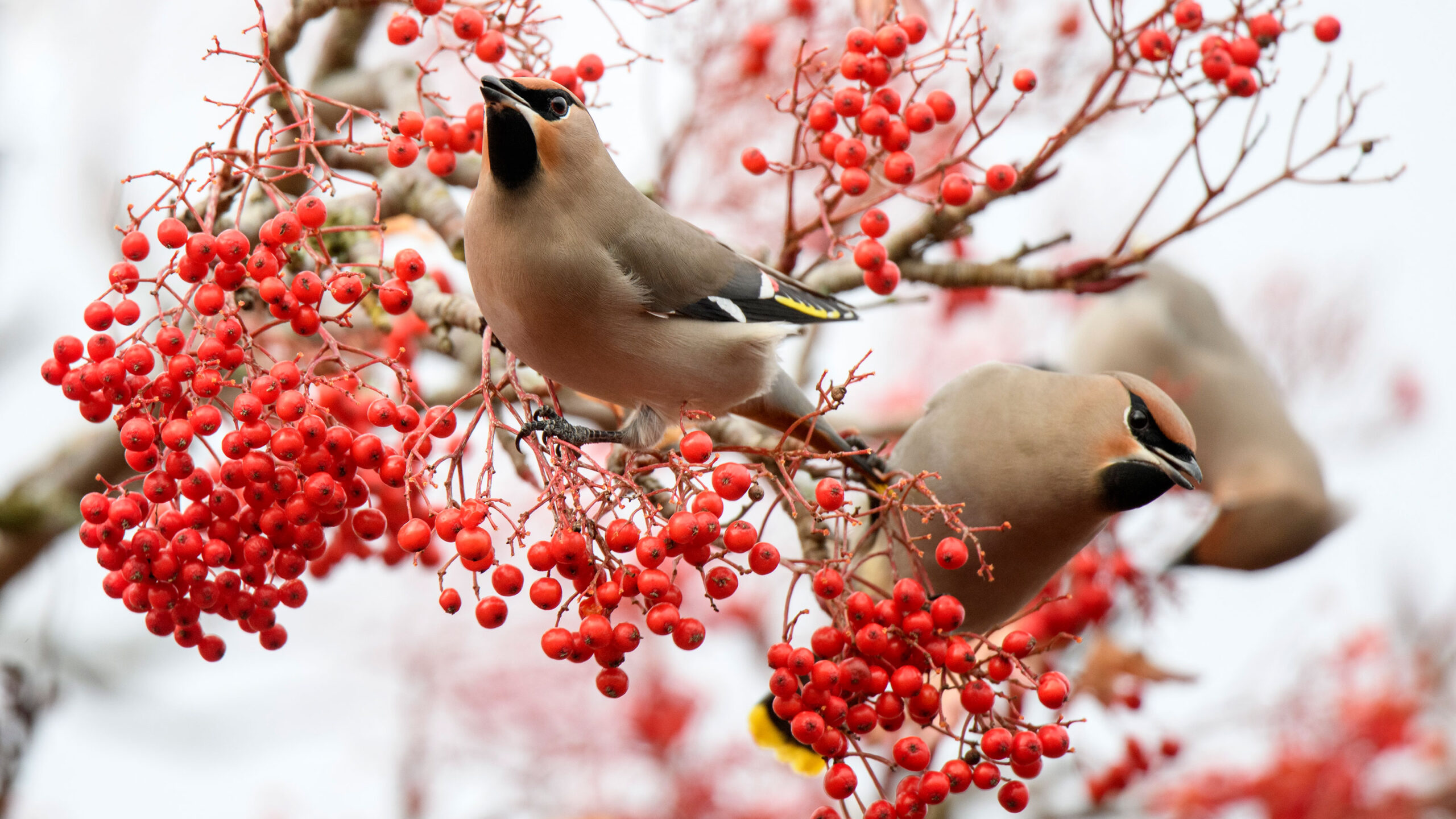Creating a garden that not only appeals to the eyes but also supports local wildlife can be a rewarding endeavor. Incorporating trees with berries is a fantastic way to attract birds, insects, and other species, providing them with necessary sustenance throughout the year.
There is a diverse range of trees to feed the wildlife in your garden, each offering different types of berries and benefits. Choosing the best trees with berries not only enriches the biodiversity of your garden but also contributes to the ecological health of your local environment.
What are the best trees with berries for wildlife?
When selecting trees for your garden, consider varieties such as the rowan or mountain ash, with its bright orange-red berries that are a favorite among birds. The holly is another classic choice, offering evergreen foliage and bright red berries.
Native species like hawthorn and spindle trees are also excellent choices. They produce berries that persist into winter, providing a vital food source when other resources are scarce. Additionally, wild cherry trees not only present sumptuous berries but also bloom with stunning spring flowers.
The right selection of berry-bearing trees can serve as a magnet for wildlife, turning your garden into a living sanctuary.
Why are trees with berries important for wildlife?
During the harsh winter months, when food is hard to come by, berries serve as a crucial lifeline for wildlife. The nutritional value found in berries helps various species to survive and thrive.

Trees like the hawthorn and holly provide shelter within their dense foliage, creating a safe haven for birds to nest and protect themselves from predators.
- They act as a natural larder for wildlife, storing essential food supplies.
- Many trees with berries also play a role in pollination and seed dispersion.
- Their diverse structures and growth habits contribute to the structural complexity of the garden ecosystem.
How do berry trees enhance garden biodiversity?
Berry trees are not only a source of food but also enhance garden aesthetics with their vibrant colors and seasonal changes. Planting a variety of trees with different berry colors, sizes, and ripening times will attract a broader range of wildlife and extend the feeding season.
Wild cherry and crab apple trees are especially popular for their ornamental value and their ability to attract pollinators like bees and butterflies.
Incorporating native berry trees also supports local bird populations, allowing them to rely on indigenous food sources rather than introduced or invasive species.
What types of wildlife are attracted to berry trees?
Berry trees are a beacon for a host of wildlife species. Birds, such as thrushes, blackbirds, and waxwings, are common visitors that feast on the berries. Invertebrates, including bees and butterflies, are drawn to the flowers, and mammals like squirrels and foxes enjoy both the fruit and the shelter these trees offer.
Choosing the right berry trees for local ecosystems can greatly enhance biodiversity in urban areas, providing crucial habitats amidst concrete surroundings.

Which trees provide the best berries for birds?
For those looking to attract avian friends, trees such as rowan, holly, and crab apple are particularly appealing to birds. They provide not only food but also nesting sites and protection from predators.
Other notable berry trees that birds favor include:
- Red cedar
- Oak trees, with their acorns
- Serviceberry trees, which offer summer berries
How to choose the right berry trees for your garden?
Selecting the right trees for your garden involves considering local climate, soil type, and the biodiversity you aim to support. Opt for native species that are well-adapted to your area to ensure they thrive and fully benefit the local wildlife.
Take into account the size of your garden and the growth habits of the trees. Some may require more space or specific conditions to flourish.
It is also essential to think about the timing of berry production. Aiming for a range of trees that produce berries at different times of the year ensures that wildlife has a constant food source.
What maintenance is required for berry-bearing trees?
Maintaining berry-bearing trees typically involves regular pruning to promote healthy growth and berry production. Each species may have specific needs regarding watering, fertilization, and pest control.

It’s important to research the particular requirements of each tree species to provide the care they need to produce the best yield of berries.
Despite the maintenance required, the benefits of having these trees far outweigh the effort, as they bring life and color to your garden, supporting the local ecosystem.
Questions related to trees with berries
What kind of big tree has berries?
Large berry-bearing trees, like the rowan or mountain ash, can make a significant impact in the garden. Known for their height and clusters of berries, they provide a substantial food source for wildlife.
Red cedars are another example of a large tree that offers berries, known technically as cones, which are favored by many bird species.
What trees should I plant to attract birds?
To attract birds, choose trees with high wildlife value. Varieties such as hawthorn, holly, and crab apple are known for their attractive berries and nesting opportunities.
Planting a mix of native trees ensures that birds have access to natural food sources and suitable habitats.

What kind of tree has little red berries?
Trees like holly and rowan are famous for their little red berries. The holly’s iconic red berries are synonymous with winter, while the rowan’s orange-red berries appear in clusters and persist into the colder months.
Spindle trees also produce distinctive red fruits that open to reveal bright orange seeds, adding a splash of color to the autumn garden.
Before continuing with our list of the best trees with berries, take a moment to watch this informative video on planting and caring for hawthorn trees, one of the top berry-producing trees for your wildlife garden:
Remember, the best trees with berries are those that align with your garden’s conditions and the types of wildlife you wish to support. With thoughtful selection and care, these trees can transform your garden into a thriving ecosystem that promotes biodiversity and natural beauty, making it a haven for wildlife and a place of peace and enjoyment for you.
 Modern edging ideas: 11 chic ways to divide your garden zones
Modern edging ideas: 11 chic ways to divide your garden zones

This post is such a great resource for anyone looking to make their garden more wildlife-friendly! I never realized how many benefits berry trees offer beyond just their visual appeal. It’s really cool to learn how they can support local ecosystems and attract such a variety of wildlife. I’m definitely inspired to add some of these trees to my own garden to help out our feathered and furry friends. Thanks for sharing these insights!